How Fair Is the GPHG? A Closer Look at the ‘Oscars of Watchmaking’
The Grand Prix d’Horlogerie de Genève has, for over two decades, positioned itself as the ultimate arbiter of watchmaking excellence. Its annual ceremony draws global attention, and its winners gain prestige that few other accolades can match. But is the process truly impartial? With paid entries, a jury sourced from within the industry, and a governance structure tied to Switzerland’s watchmaking institutions, the GPHG’s independence is worth questioning. This edition, we break down the rules, the realities, and what fairness really looks like in horology’s top award.
The GPHG was established to create a platform that recognizes the pinnacle of watchmaking innovation and design. The award’s origin can be traced back to a desire among industry veterans to celebrate contemporary creations and elevate the traditions and heritage of Swiss horology. In the early years, the competition set a high bar by awarding watches that embodied both technical prowess and aesthetic elegance. The inaugural ceremony, which saw Vacheron Constantin’s Lady Kalla take home the coveted Aiguille d’Or, set a precedent that reverberates through every subsequent edition of the awards. Over the ensuing two decades, the GPHG has consistently strived to adapt to changing times, while still remaining rooted in the traditional values that have defined Swiss watchmaking for centuries. This delicate balance of honoring tradition and encouraging innovation is central to understanding the awards’ enduring appeal as well as the critiques of its inherent biases.
 Lady Kalla, First to Win. Image: Vacheron Constantin
Lady Kalla, First to Win. Image: Vacheron Constantin
This edition, we dive into the multifaceted structure of the GPHG, examining its evolution, the mechanisms that underpin its judging and selection process, and the persistent concerns regarding favoritism and bias. We explore the data and trends that have emerged over the years and consider the broader implications of these critiques on the watch industry as a whole.
What is the Grand Prix d'Horlogerie de Genève (GPHG)?
Recognized as a public interest foundation since 2011, the Grand Prix d’Horlogerie de Genève (GPHG) has become the preeminent institution for celebrating horological achievement on a global stage. Its stated mission is “to highlight and yearly reward the most remarkable contemporary creations and promote the watchmaking art worldwide,” a mandate that underscores its dual role as both a competitive showcase and a cultural ambassador for fine watchmaking.
The GPHG Foundation operates under the oversight of a Foundation Board, a structure designed to preserve its neutrality and independence. While the GPHG is not directly tied to any single watch brand, its governance reflects deep connections to the broader Swiss watchmaking ecosystem. Board members are drawn from cantonal and city authorities of Geneva, from institutions such as the Musée international d’horlogerie in La Chaux-de-Fonds, and from professional associations within the field. This arrangement is intended to safeguard impartiality, differentiating the GPHG from awards that are run by individual media outlets, trade fairs, or private sponsors with vested commercial interests. Nevertheless, given the concentration of the global watch industry in Switzerland, this governance model inevitably retains a degree of Swiss-centered perspective.
Each year, the awards span a range of categories intended to represent the breadth and diversity of contemporary watch production. These categories evolve in response to market trends, technological developments, and artistic movements, but typically include Men’s, Men’s Complication, Ladies’, Ladies’ Complication, Iconic, Tourbillon, Calendar and Astronomy, Chronograph, Sports, Jewellery, Artistic Crafts, the ‘Petite Aiguille’ (reserved for more affordable luxury watches within a defined price threshold), the Challenge (for even more accessible price ranges), Mechanical Exception, and Chronometry. At the apex stands the ‘Aiguille d’Or’ Grand Prix, regarded as the most prestigious honor, awarded to what the jury deems the single most outstanding watch across all categories. Additional discretionary prizes such as the Innovation Prize, the Audacity Prize, the Horological Revelation Prize (celebrating promising young brands), and the Special Jury Prize allow the GPHG to acknowledge achievements that transcend conventional category boundaries.
Participation is voluntary and requires brands to submit watches along with an entry fee for each submission. This creates an immediate economic filter: only those companies willing and able to invest in the process can compete. The selection process unfolds over several stages, beginning with the submission period and narrowing through jury deliberations until a shortlist emerges. These pre-selected watches are then presented to the public in a series of traveling exhibitions, which in recent years have included stops in global capitals such as Hong Kong, Dubai, New York, and Paris. The cycle culminates in a high-profile awards ceremony in Geneva each November, attended by an audience of industry leaders, collectors, press, and enthusiasts.
The ‘GPHG Winner’ designation carries a credibility that resonates across the value chain, from end consumers and dedicated collectors to retailers and journalists. The impact can be particularly pronounced for independent watchmakers, for whom a win often acts as a catalyst for international recognition and commercial success. In some cases, a single award has propelled small ateliers from niche obscurity to global demand, cementing their place in the competitive landscape.
The GPHG Judging Process
 Awards waiting to be delivered. Image: GPHG
Awards waiting to be delivered. Image: GPHG
The credibility of any award rests heavily on its judging process. The GPHG's system has evolved significantly, particularly with the introduction of the GPHG Academy in 2020, which aims to broaden participation and improve legitimacy.
The GPHG Academy: Launched in 2020, the Academy represents a major shift from the previous, smaller jury-centric model. It comprises several hundred members (over 840 members from over 100 countries as of late 2023/early 2024) drawn from across the watchmaking spectrum: watchmakers, designers, journalists, retailers, collectors, consultants, educators, historians, and other experts. Academy members are invited based on their recognized expertise and involvement in the industry. The list of Academy members is publicly available on the GPHG website, enhancing transparency.
-
Role in Pre-selection: The Academy's primary role is in the first round of voting. Using a dedicated digital platform, Academy members vote on all entered watches to determine the nominees – typically six watches in each category. This distributed voting process aims to leverage the diverse perspectives of a large, international body of experts.
The Jury: While the Academy handles the nominations, the final awarding of prizes is decided by a smaller Jury, convened annually. This Jury is composed of around 30 members. It includes a core contingent selected from the Academy, ensuring continuity and representation from the larger body, plus invited international experts chosen for their specific knowledge or influence. The President of the Jury (often a prominent figure in the watch world, like Nick Foulkes in recent years) guides the proceedings but typically does not vote, except potentially in the case of a tie. The composition of the Jury is also made public each year.
-
Role in Final Voting: The Jury meets in Geneva shortly before the awards ceremony. They physically examine the nominated watches – a crucial step allowing for hands-on assessment of craftsmanship, finishing, and functionality. Following deliberations, the Jury votes by secret ballot to determine the winner in each category and the recipient of the ‘Aiguille d'Or’. The final vote remains confidential, although the Jury's composition is known.
 GPHG Jury Members, 2024. Image: GPHG
GPHG Jury Members, 2024. Image: GPHG
Transparency Measures: The GPHG has made strides in transparency by:
-
Publishing the full list of Academy members.
-
Publishing the composition of the annual Jury.
-
Making the official rules publicly accessible.
-
Live-streaming the awards ceremony. However, the specific votes of Academy members and Jurors, as well as the detailed deliberations of the Jury, remain confidential. This balance protects individual voters but limits full transparency into why specific watches win over others.
The Criteria for Selection: Formal Rules and Informal Realities
 The legendary Jean-Pierre Hagmann receiving a Lifetime Achievement Award in 2024. Image: GPHG
The legendary Jean-Pierre Hagmann receiving a Lifetime Achievement Award in 2024. Image: GPHG
The GPHG presents itself as the pinnacle of institutional recognition in contemporary watchmaking, yet the process by which watches make it onto the competition floor is often less understood by the public than the ceremony itself. While the GPHG is framed in the language of an open, merit-based competition, the actual path from a watch’s launch to its place on the stage involves both clearly defined procedural requirements and a set of unwritten cultural dynamics that subtly shape the field.
Formally, the GPHG operates as a foundation under Swiss law, with its stated mission being the promotion of fine watchmaking worldwide. The eligibility criteria are, at least on paper, relatively straightforward:
-
Eligibility Window: The competing watch must have been commercialized between May of the previous year and the end of October of the current competition year. This ensures that the selection reflects contemporary releases rather than retrospective judgments.
-
Brand Submission Process: Contrary to the assumption that the GPHG ‘scouts’ or autonomously selects watches, brands must actively submit their models for consideration. This means that, in theory, a superlative watch could go unrecognized simply because its manufacturer opted not to participate. Reasons for non-participation can range from strategic marketing decisions to financial considerations, as an entry fee applies.
-
Category Requirements: Each submitted watch must fit one of the competition’s defined categories, which are updated annually. These categories cover both traditional horological segments (e.g., Men’s, Ladies’, Chronograph, Calendar and Astronomy) and more conceptual ones (e.g., Challenge, Innovation, Mechanical Exception). Importantly, the classification is not merely descriptive, it has strategic implications, as the field of competitors in certain categories is far smaller and more specialized than in others.
-
Technical and Aesthetic Standards: While the GPHG does not publish a detailed rubric with weighted criteria, jurors are instructed to evaluate a watch’s technical complexity, aesthetic execution, functionality, and contribution to watchmaking culture. This is where subjectivity enters the process; a juror’s understanding of ‘contribution’ may privilege innovation over refinement, or vice versa.
-
Jury Composition and Deliberation: The jury is a mix of watchmakers, journalists, retailers, designers, collectors, and other industry figures from around the world. This diversity is intended to balance insider technical knowledge with broader market perspectives. However, the composition also means that certain stylistic or technical biases can emerge depending on the collective experience and taste of a given year’s panel.
-
Nomination and Voting Process: Once submissions close, the jury undertakes an initial voting round to narrow each category to six finalists. These finalists are then physically examined during the jury’s in-person session in Geneva, where a second and final round of voting takes place. Voting is done via secret ballot, with the results audited to ensure procedural correctness.
While these criteria form the official framework, it is equally important to note the informal realities shaping the GPHG’s roster. As the industry’s most visible award ceremony is headquartered in Switzerland, the geographic concentration of the luxury watch industry means Swiss brands inevitably dominate the field. This is not solely a matter of cultural bias. Simply put, the density of production, heritage maisons, and marketing infrastructure in Switzerland produces a naturally disproportionate number of eligible watches.
Additionally, the submission-based nature of the competition creates a self-selecting pool. Brands that already possess strong marketing narratives and the resources to sustain an award campaign are far more likely to participate. Smaller or independent brands may enter, but when they do, the act of being ‘nominated’ is sometimes leveraged as a major marketing talking point, sometimes to the point of overshadowing the actual outcome. As discussed in The Collective podcast's episode on the GPHG, for certain companies, even a nomination serves as a validation tool in their publicity arsenal, regardless of whether they have a realistic chance of winning.
Ultimately, the GPHG’s selection process reflects a hybrid of procedural democracy and industry pragmatism. The framework is designed to be inclusive and transparent, yet the forces of geography, economics, and brand strategy mean that the stage in Geneva each November is never simply a neutral cross-section of the best watches in the world, but a curated representation shaped by the mechanics of participation itself.
Critical Perspectives on Fairness and Bias
Swiss Brand Dominance and Resources
One of the most significant criticisms leveled against the GPHG concerns the overrepresentation of established Swiss brands within its nominations and winners. Data compiled from recent competitions reveals that more than 80 percent of the nominated watches come from well-known Swiss brands, with a correspondingly high percentage of major awards being claimed by the likes of Patek Philippe (in the early days, now they largely no longer participate), Audemars Piguet, and Vacheron Constantin. This disproportionate representation has led many to argue that the awards have become an echo chamber that privileges traditional, well-funded entities over emerging international watchmakers who demonstrate remarkable innovation and design.
 2022, Geneva. Image: GPHG
2022, Geneva. Image: GPHG
The underlying reason for this imbalance is multifaceted, starting with the GPHG's inherent roots in Swiss culture and tradition, evidenced by its Geneva location, a city synonymous with luxury watchmaking, and its historical ties to the Swiss industry. It is also a fundamental reality that the wristwatch industry is largely based in Switzerland due to centuries of accumulated history, knowledge, and infrastructure. From the time of the Reformation, which brought skilled Protestant artisans to Geneva, to the development of a highly specialized and interconnected network of workshops and suppliers (known as établissage) in the Jura Mountains, Switzerland built a unique ecosystem. This historical concentration of expertise means that a naturally disproportionate number of high-end brands, designers, and manufacturers are Swiss, leading to a much larger pool of potential entries and a higher number of nominations from the region.
Consequently, local brands, steeped in centuries of craftsmanship, naturally dominate the conversation. Moreover, the considerable resources available to established brands allow them to submit multiple entries and mount comprehensive marketing and presentation campaigns designed to capture the attention of the judging panels. In contrast, smaller independent brands, which often rely on limited budgets and operate on the fringes of the mainstream market, find it challenging to compete on an equal footing. Such a scenario has led to concerns that the awards may inadvertently reinforce the status quo by perpetuating a cycle of recognition that repeatedly sees Swiss successes multiply.
Jury Composition and Potential Bias
Another focal point of criticism is the composition of the jury responsible for evaluating the nominated timepieces. Each year, the GPHG assembles a jury drawn primarily from the so-called ‘Academy’ of horological experts, an assembly that includes industry insiders such as journalists, collectors, and professionals who have long been associated with the Swiss watchmaking ecosystem. Although the intention behind this selection is to ensure that the judges possess the necessary expertise to make informed decisions, the reality is that this homogeneity may inadvertently breed bias.
They inevitably have existing relationships with brands, potentially creating unconscious biases or perceived conflicts of interest. Although jurors are expected to declare conflicts and potentially recuse themselves from voting in specific categories, the nuances of industry relationships can be subtle. To boot, ensuring diverse perspectives (geographic, gender, professional background) within the relatively small Jury remains a challenge.
Such biases are not merely a matter of perception. They have tangible implications for the outcomes of the competition. When the panel is composed predominantly of individuals who share a similar background and set of values, there is a natural gravitation toward recognizing watches that adhere to those same values, often at the expense of recognizing true innovation. In addition, the limited international representation within the jury further compounds the issue. Despite the global nature of the luxury watch market, with emerging markets in Asia, the Middle East, and elsewhere playing an increasingly significant role, the composition of the jury has remained stubbornly Eurocentric, thereby sidelining contributions from other regions that might offer fresh perspectives on design and functionality, although the Academy's international makeup aims to mitigate this.
Financial Barriers to Entry
Financial factors also contribute to the perceived bias in the GPHG awards. Participation in the competition requires watch brands to pay an entry fee, currently set at around CHF 800 per watch, on top of the nomination fee of CHF 7,000. While these fees might appear nominal in isolation, it represents a significant barrier for smaller, independent brands that operate on tight budgets. The fees, coupled with additional costs such as travel, promotional materials, and the logistical expenses associated with showcasing a watch on an international stage, means that only brands with sufficient financial resources can consistently participate in the competition. This economic gatekeeping has the effect of further entrenching the dominance of well-funded, established players in the industry.
For many smaller watchmakers, the financial burden of participating in the GPHG outweighs the potential benefits of recognition, leading to a self-reinforcing cycle wherein only the most affluent brands are regularly seen on the nomination list. The list from the 2024 competition showed that independent and microbrands accounted for around 12 percent of the nominees, which is a stark statistic that underscores the systemic barriers to entry that exist within the current structure of the awards.
 A smaller independent, Sylvain Berneron's Mirage 34. Part of Hairspring Exclusives.
A smaller independent, Sylvain Berneron's Mirage 34. Part of Hairspring Exclusives.
Judging Opacity and Subjectivity
The opacity of the judging process is another area where the GPHG has come under scrutiny. While the organizers maintain that the secret ballot and the closed-door deliberations are designed to preserve the integrity and impartiality of the evaluation, the lack of transparency in these proceedings has fostered a climate of suspicion among critics. The precise criteria used to assess the watches remain somewhat ambiguous, with the relative weighting of factors such as technical innovation, design aesthetics, and heritage often left to the discretion of individual jury members. This inherent subjectivity has given rise to accusations that the process is not as objective as it purports to be, with some observers suggesting that the decisions are influenced as much by personal relationships and industry politics as by the intrinsic merits of the watches themselves.
One illustrative example occurred in 2017 when Chopard’s L.U.C. Full Strike, a highly-regarded minute repeater was awarded the Aiguille d’Or. Both Karl-Friedrich Scheufele and Caroline Scheufele, Co-Presidents of Chopard, were members of the GPHG jury that year. Their dual roles as both jury members and representatives of a winning brand raised concerns about impartiality. This situation highlighted the need for clearer guidelines regarding jury composition and potential conflicts of interest to maintain the credibility of the awards.
 Chopard LUC. Image: Hodinkee
Chopard LUC. Image: Hodinkee
Commercial Appeal vs. Technical Innovation
A further point of contention is the observation that the GPHG sometimes appears to favor commercial popularity over genuine technical or artistic innovation. In several instances, the watches that have captured the imagination of consumers and critics alike have gone on to win awards, not necessarily because they represent groundbreaking advancements in horology, but because they embody a mix of aesthetic appeal and market success that resonates with the established tastes of the judging panel. For example, the 2021 Aiguille d’Or was awarded to Bulgari’s Octo Finissimo Perpetual Calendar. However, critics argued that this choice came at the expense of recognizing more daring and technically innovative models from smaller or less mainstream brands, such as MB&F’s experimental creations, specifically the LMX Titanium. This trend suggests that the awards, whether intentionally or not, may be reinforcing a conservative approach to watch design, one that privileges continuity and market appeal over risk-taking and radical innovation. As a consequence, the GPHG may be seen as perpetuating a narrow definition of excellence that does not fully capture the evolving landscape of contemporary watchmaking.
Cultural Context and Industry Hierarchies
Beyond these internal critiques, there is also a broader cultural dimension to the debate over fairness in the GPHG. The luxury watch industry, by its very nature, is steeped in tradition and exclusivity. This cultural context can sometimes serve to reinforce existing hierarchies within the industry, with prestigious awards like the GPHG acting as gatekeepers that determine which brands and designs are deemed worthy of recognition. In many respects, the awards function as both a mirror and a molder of industry trends. When the majority of winners come from a narrow pool of established names, it sends a signal to the market about which attributes are valued most highly—attributes that may include a reverence for tradition, a commitment to classic design, and a proven track record of excellence. While these qualities are undoubtedly important, the risk is that they can also stifle innovation by creating an environment in which unconventional approaches are less likely to be rewarded. This phenomenon is not unique to the horology world; it is a challenge faced by many fields where awards and accolades play a significant role in shaping public perception and market dynamics. The GPHG, therefore, occupies a delicate balancing act, one in which it must honor the past while simultaneously fostering the kind of creative disruption that can lead to genuine progress.
Format and Category Concerns
It is also essential to consider the impact of the GPHG’s format on the perception of bias. The competition is divided into multiple categories, which ranges from men’s and ladies’ watches to complications, artistic crafts, and even more niche classifications like tourbillon and chronometry watches. This broad categorization is intended to capture the diverse spectrum of horological achievements. However, the very structure of having so many categories can dilute the focus on truly innovative designs and sometimes result in awards that are more reflective of traditional benchmarks than of any radical breakthroughs. For instance, while categories such as the ‘Challenge Watch’ and ‘Mechanical Exception’ are designed to encourage more experimental entries, they often attract only a small number of nominations compared to the more mainstream divisions. In many cases, the watches in these niche categories are judged by the same panel that evaluates the more traditional entries, thereby creating the possibility that the same set of biases rooted in established norms could inadvertently influence decisions across the board. As a result, even when innovative watches are presented, they may be evaluated against a backdrop of expectations that do not fully appreciate their departures from convention.
International Representation
The international dimension of the awards adds yet another layer to the debate. In today’s globalized luxury market, consumers and collectors come from a wide array of cultural backgrounds, each with its own tastes and expectations regarding what constitutes a ‘great’ watch. However, the GPHG, with its strong Swiss heritage and predominantly European jury, may not fully capture this international diversity. While the awards have made some efforts in recent years to broaden their appeal by, for example, inviting jurors and experts from emerging markets, the overall structure still leans heavily toward a Eurocentric perspective. This imbalance can be particularly problematic when considering that regions such as Asia and the Middle East have become critical markets for luxury watches, accounting for a significant portion of global sales. For example, a 2022 study by Deloitte highlighted that over 50 percent of luxury watch sales occurred in Asia, a statistic that stands in stark contrast to the limited representation of Asian experts on the GPHG jury. Such disparities inevitably raise questions about the extent to which the awards truly reflect global tastes and innovations.
Media Narratives and External Factors
One cannot ignore the role that media coverage plays in shaping the narrative around the GPHG and its fairness. Highly-revered publications like Hodinkee, WatchTime, and Monochrome Watches not only report on the awards but also contribute to the discourse regarding which aspects of the competition are most worthy of scrutiny. These platforms often serve as conduits for the opinions of industry insiders and collectors, providing a forum for debates on everything from the technical merits of specific watches to broader questions of bias and transparency. Media narratives can sometimes amplify existing concerns, particularly when multiple sources converge on similar criticisms, such as the overrepresentation of Swiss brands or the lack of diversity within the judging panel. In turn, these discussions have a tangible impact on public perception, influencing not only how the awards are viewed but also how watch enthusiasts and potential buyers approach the market. When the narrative around the GPHG becomes dominated by questions of fairness, it risks undermining the credibility of an award that has long been seen as the pinnacle of horological achievement.
Critics have also pointed to instances where the outcome of the awards appears to be influenced by external factors beyond the merits of the watches themselves. For example, in some years, the timing of the awards and the concurrent marketing campaigns of major brands have led to speculation that the final decisions may be swayed by factors such as commercial partnerships or pre-existing promotional arrangements. While the GPHG organizers insist that the judging process is entirely independent and insulated from commercial pressures, the mere appearance of impropriety can cast a long shadow over the awards. In an industry where brand image and market positioning are paramount, even the perception of bias can have significant repercussions. When a renowned brand wins a coveted prize, the decision is often scrutinized not only for its technical justification but also for the potential business advantages it confers. Advantages that can range from enhanced media exposure to increased consumer confidence and, ultimately, higher sales. In this light, any hint of favoritism or bias, whether real or perceived, has the potential to undermine the integrity of the awards and fuel broader criticisms about the fairness of the judging process.
The Value of Mere Participation
In the highly competitive world of watchmaking, even a nomination or simple participation in the GPHG can be leveraged by brands, particularly smaller independent ones. However, this practice often leads to a misperception of a watch’s standing. For a young or independent brand with a limited marketing budget, the GPHG provides a unique and highly visible platform. Simply having a watch appear on the list of submitted entries, or being a ‘GPHG Participant,’ can be a powerful marketing tool. Brands may prominently feature this status on their websites, in press releases, or in advertising campaigns, suggesting a level of validation and quality that may not be fully deserved. This can create a false equivalency in the minds of consumers and new collectors, who may not understand the multi-stage nature of the competition. While being nominated as a finalist is a significant achievement, as it indicates the watch has been selected as one of the top six in its category by the GPHG Academy, simply participating in the first round and paying the entry fee means very little about the watch's quality or innovation.
For a well-informed audience, the difference is clear, but for a broader market, the distinction can be easily blurred. This overemphasis on participation alone can be seen as a way for smaller brands to gain a veneer of credibility without having to withstand the full scrutiny of the judging process, further complicating the narrative of what it truly means to be recognized by the GPHG.
 The Octo Finissimo Perpetual Calendar. Image: Monochrome
The Octo Finissimo Perpetual Calendar. Image: Monochrome
Calls for Reform and Future Directions
Given the myriad criticisms and concerns surrounding the GPHG, it is perhaps unsurprising that there have been calls for reform. Many industry observers argue that in order to maintain its status as the gold standard in horology, the GPHG must take proactive steps to address the systemic biases that have been identified over the years. One commonly proposed reform is to increase the transparency of the judging process. By publishing detailed criteria and scoring rubrics, the organizers could demystify the decision-making process and provide clearer justification for the outcomes. Greater transparency would also allow brands, particularly those from independent or emerging sectors, to understand the specific areas in which they need to innovate or improve if they hope to be recognized in future competitions. In addition to transparency, there is also a strong case for diversifying the composition of the judging panel. Actively recruiting jurors from underrepresented regions, especially from markets that are experiencing rapid growth, could help to mitigate the Eurocentric bias that currently characterizes the awards. Furthermore, the inclusion of experts with backgrounds in digital technology, sustainability, and modern design could broaden the evaluative framework to encompass a wider range of criteria, thereby ensuring that truly innovative watches are not overlooked simply because they deviate from traditional standards.
Another potential avenue for reform lies in revisiting the financial barriers that currently restrict participation. Reducing or even waiving entry fees for independent watchmakers, or establishing a tiered fee structure that accounts for the size and resources of different brands, could help to level the playing field and encourage a more diverse range of participants. Such measures would not only enhance the fairness of the competition but also enrich the overall quality of the entries by allowing a broader spectrum of innovative designs to compete. Critics argue that by making the awards more accessible, the GPHG could transform itself into a truly global celebration of horological innovation, one that honors both the rich heritage of Swiss watchmaking and the fresh perspectives emerging from outside its traditional sphere.
Moreover, some have proposed the introduction of new award categories that recognize achievements in non-traditional areas of watchmaking. For instance, given the rapid evolution of wearable technology and the growing importance of sustainability in consumer choices, it would be both timely and appropriate to include categories that celebrate excellence in smartwatches, eco-friendly production methods, and innovative uses of digital technology in horology. Not only would this help the GPHG remain relevant in a rapidly changing market, but it would also signal a commitment to embracing the full spectrum of what contemporary watchmaking can offer. Critics contend that by clinging too tightly to traditional paradigms, the awards risk alienating younger audiences and innovative designers who are more attuned to modern trends and technological advancements. Expanding the scope of the awards to include these emerging areas would be a clear indicator of the GPHG’s willingness to evolve and adapt to the demands of a globalized, dynamic market.
A further aspect of the debate centers on the idea that the GPHG, as it stands, may inadvertently encourage brands to prioritize what is perceived as ‘safe’ design over bold, experimental concepts. When success in the competition appears to hinge on adherence to established aesthetic and technical norms, brands may be less inclined to take the creative risks necessary to push the boundaries of what is possible in watchmaking. Over time, this dynamic can lead to an industry that is increasingly homogenous, where innovation is stifled in favor of designs that are more likely to garner approval from a panel steeped in tradition. This phenomenon is compounded by the fact that media coverage and industry accolades often reinforce prevailing trends, further entrenching a conservative approach to design and technical development. Consequently, the GPHG can come to be seen not only as a celebration of excellence but also as a conservative force that, perhaps unintentionally, discourages radical innovation.
The Enduring Value and Positive Impact of the GPHG
Despite the numerous criticisms and challenges discussed above, it is important to acknowledge the many positive aspects of the GPHG and the significant role it plays in the watch industry. For decades, the awards have served as a powerful platform for recognizing the very best in horological craftsmanship, bringing global attention to designs that might otherwise remain under the radar. Winning a GPHG award can catapult a brand into the international spotlight, providing not only enhanced media coverage but also increased consumer confidence, a phenomenon that has tangible economic benefits. In many cases, the prestige associated with the awards has translated into a measurable boost in sales and market positioning, particularly for independent watchmakers who may lack the extensive distribution networks of larger houses. The recognition afforded by the GPHG can serve as a critical lifeline for smaller brands, helping them secure investments, expand their operations, and ultimately contribute to a more vibrant and diverse industry landscape.
Furthermore, the existence of the GPHG has spurred ongoing dialogue within the industry regarding what constitutes excellence in watchmaking. This dialogue, though sometimes contentious, has been instrumental in driving innovation and pushing the boundaries of the craft. By continuously questioning established norms and encouraging debate, the awards have helped to foster an environment in which creative experimentation is valued, even if it is not always immediately recognized by the awarding panel. The controversies surrounding the GPHG have, in many ways, contributed to a broader reassessment of the criteria by which watches are judged, prompting manufacturers and designers to rethink the balance between tradition and innovation.
The Path Forward
In recent years, the debate over the fairness of the GPHG has also taken on a more international dimension. As emerging markets continue to reshape the global landscape of luxury watch sales, there is growing pressure on the awards to evolve in tandem with these shifts. Critics argue that to remain relevant, the GPHG must broaden its scope to include a more diverse array of perspectives, not only in terms of jury composition but also in the types of watches that are considered for nomination. This means acknowledging that excellence in watchmaking is not the sole province of Swiss or European brands; rather, it is a global phenomenon that encompasses a wide range of styles, techniques, and innovations.
 A. Lange & Söhne Calibre L001.1. Part of Hairspring Exclusives
A. Lange & Söhne Calibre L001.1. Part of Hairspring Exclusives
For example, Japan’s Grand Seiko and Germany’s A. Lange & Söhne have both earned international acclaim for their technical mastery and design ingenuity, yet they have historically struggled to break through in an awards system that is perceived as being overly insular. The Zeitwerk won in 2009, but A. Lange & Söhne have since not had motivation to participate. And, of course, this isn't even to mention the elephant in the room: Rolex's absence. Addressing these concerns requires a concerted effort by the GPHG organizers to recalibrate the balance between tradition and innovation, ensuring that the awards are truly reflective of the global state of the art in horology. The long-term implications of these debates extend far beyond the confines of any single awards ceremony. The GPHG, as one of the most visible arbiters of excellence in watchmaking, plays a significant role in shaping consumer perceptions and industry trends. When the awards are seen as biased or overly exclusive, there is a risk that they may lose their luster as a true measure of quality and innovation. In an era where consumers are increasingly discerning and where access to information is more democratized than ever before, maintaining the credibility of such awards is paramount. A loss of trust in the GPHG could have far-reaching consequences, not only for the awards themselves but for the broader watch industry, which relies on such accolades to help define and maintain standards of excellence. As such, the ongoing debates about fairness, transparency, and bias are not merely academic; they have real-world implications for how watches are designed, marketed, and ultimately appreciated by collectors and enthusiasts around the globe.
In contemplating the future of the GPHG, it is worth considering the potential for a more inclusive and transparent model that actively addresses the criticisms outlined above. For instance, one innovative proposal involves the creation of a parallel awards track specifically dedicated to independent and emerging watchmakers. Such a track could operate alongside the traditional categories, providing a platform for brands that might otherwise be marginalized by the current system. By doing so, the GPHG could not only broaden its appeal but also foster a more dynamic interplay between established traditions and avant-garde experimentation. This approach would help to ensure that the awards remain a true barometer of contemporary horological excellence, one that is capable of evolving in step with the changing contours of the industry.
While the GPHG continues to be revered as a pinnacle of watchmaking achievement, it is also a lightning rod for debate regarding fairness and bias. The overrepresentation of established Swiss brands, the homogeneity of the judging panel, the financial barriers that restrict participation, and the opaque nature of the evaluation process all contribute to a perception, at times, a reality that the awards are skewed in favor of tradition and commercial success over true innovation. Yet, these very challenges also present an opportunity for growth and evolution. By embracing reforms that enhance transparency, diversify representation, and lower barriers to entry, the GPHG has the potential to reinvent itself as a more inclusive and forward-looking institution. Such a transformation would serve not only to bolster the credibility of the awards but also to enrich the global landscape of watchmaking by ensuring that every pioneering effort, no matter how unconventional, is given the recognition it deserves.
While the criticisms leveled against the GPHG are substantive and grounded in observable trends and data, it is important to recognize that no award system is perfect. The inherent subjectivity of art, design, and technical innovation means that any adjudication process will inevitably reflect the perspectives and biases of those involved. However, by actively engaging with these criticisms and seeking out constructive reforms, the GPHG can continue to evolve in a manner that upholds its legacy while addressing the legitimate concerns of a rapidly changing industry. The path forward involves not only acknowledging the shortcomings of the current system but also charting a course that is responsive to the diverse and dynamic realities of modern watchmaking.
Ultimately, the debate over the fairness of the GPHG is not a zero-sum contest between tradition and innovation but rather an ongoing conversation about the values that underpin the art of watchmaking. It is a dialogue that invites all stakeholders to contribute their perspectives on what it means to excel in an industry that is as much about storytelling and heritage as it is about precision engineering and cutting-edge design. By fostering an open and honest discourse about its practices, the GPHG has the opportunity not only to refine its own processes but also to inspire a broader cultural shift within the luxury watch sector, one that embraces diversity, champions innovation, and recognizes that excellence can take many forms.
Thus, while the debate over the fairness of the GPHG is complex and multifaceted, it ultimately underscores a fundamental truth about the world of luxury watchmaking: that excellence is an evolving concept, one that must continually be reexamined in light of new ideas, technologies, and cultural shifts. The GPHG, with all its undeniable influence, has the potential to serve as a catalyst for that evolution, provided it is willing to confront its own shortcomings and embrace a future that is as diverse and dynamic as the watches it celebrates. In doing so, it will not only reinforce its own legacy but also help to shape the future trajectory of an industry that has long captivated the imaginations of collectors, enthusiasts, and connoisseurs around the world.
Conclusion: Flawed but Valuable?
 The award, framed. Image: GPHG
The award, framed. Image: GPHG
The GPHG occupies a unique and influential position in the watch world. Its efforts to establish a structured, broad-based system for recognizing horological excellence are commendable, particularly the introduction of the large, international Academy. The GPHG provides a valuable platform for showcasing innovation, artistry, and craftsmanship, offering significant benefits to winning brands, especially independents.
However, achieving perfect fairness in judging inherently subjective luxury goods is an elusive goal. Criticisms regarding potential biases stemming from brand influence, entry fees, jury composition, the opacity of final deliberations, and the inherent subjectivity of taste are valid points for discussion and ongoing refinement. The dominance of Swiss brands and the non-participation of some key players also temper its claim to be a truly comprehensive global award.
Ultimately, the GPHG should perhaps be viewed not as an infallible arbiter of objective ‘best,’ but as a well-regarded, high-profile industry poll reflecting the consensus of a large body of experts and insiders at a particular moment. It successfully generates excitement, discussion, and visibility for watchmaking globally. While its processes could arguably be more transparent and its susceptibility to various influences acknowledged, the GPHG remains the most significant and respected awards ceremony in the industry. Its value lies less in definitively crowning the best watch and more in celebrating the diverse creativity and technical ingenuity that continue to drive the art and science of horology forward. The ongoing debate about its fairness serves as a healthy check, pushing the organization, the judges, and the industry itself to continually reflect on what constitutes true excellence in watchmaking.









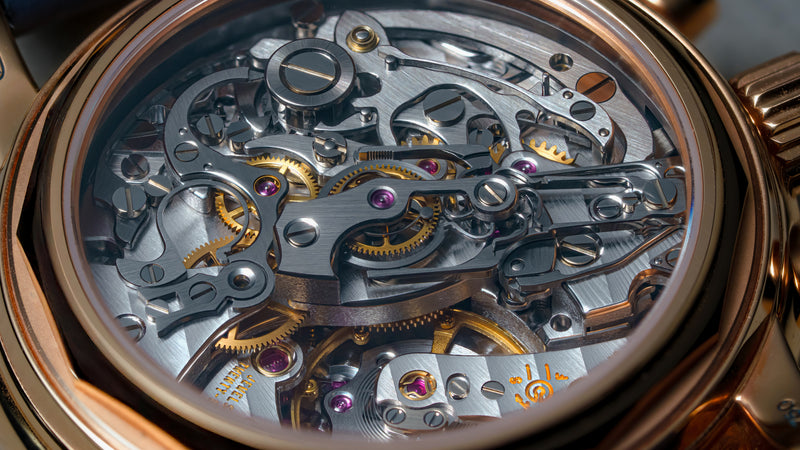



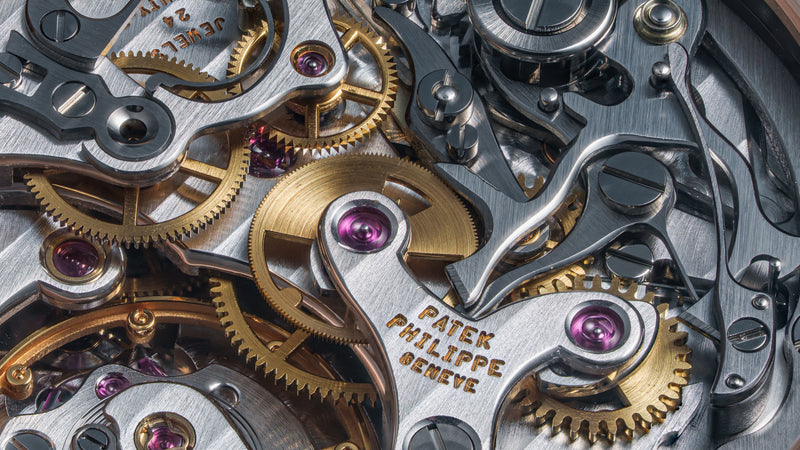












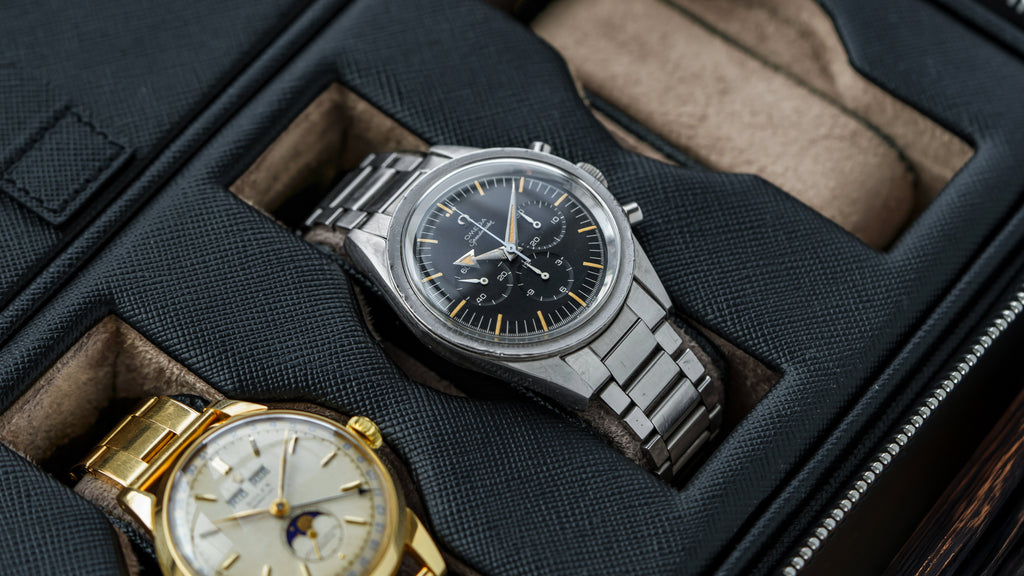
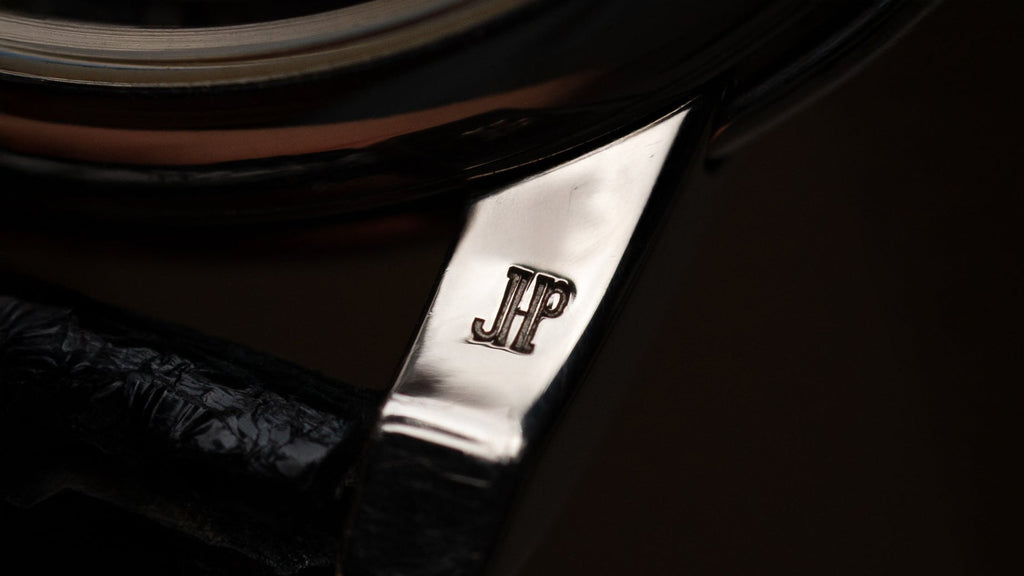

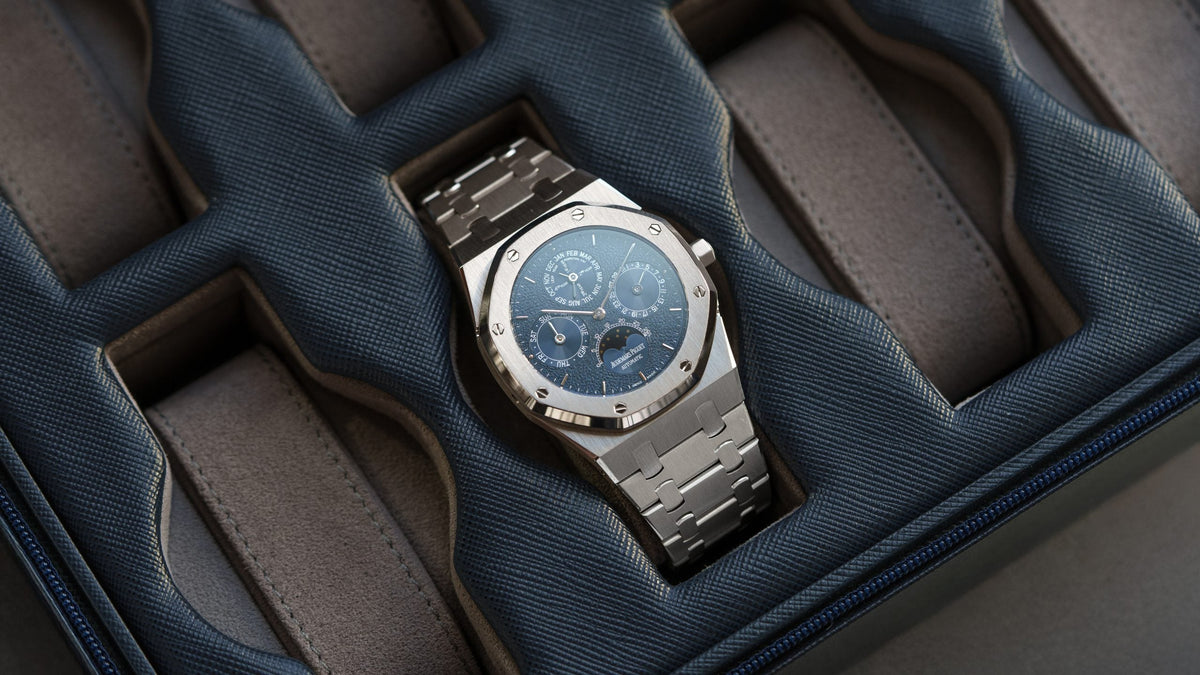
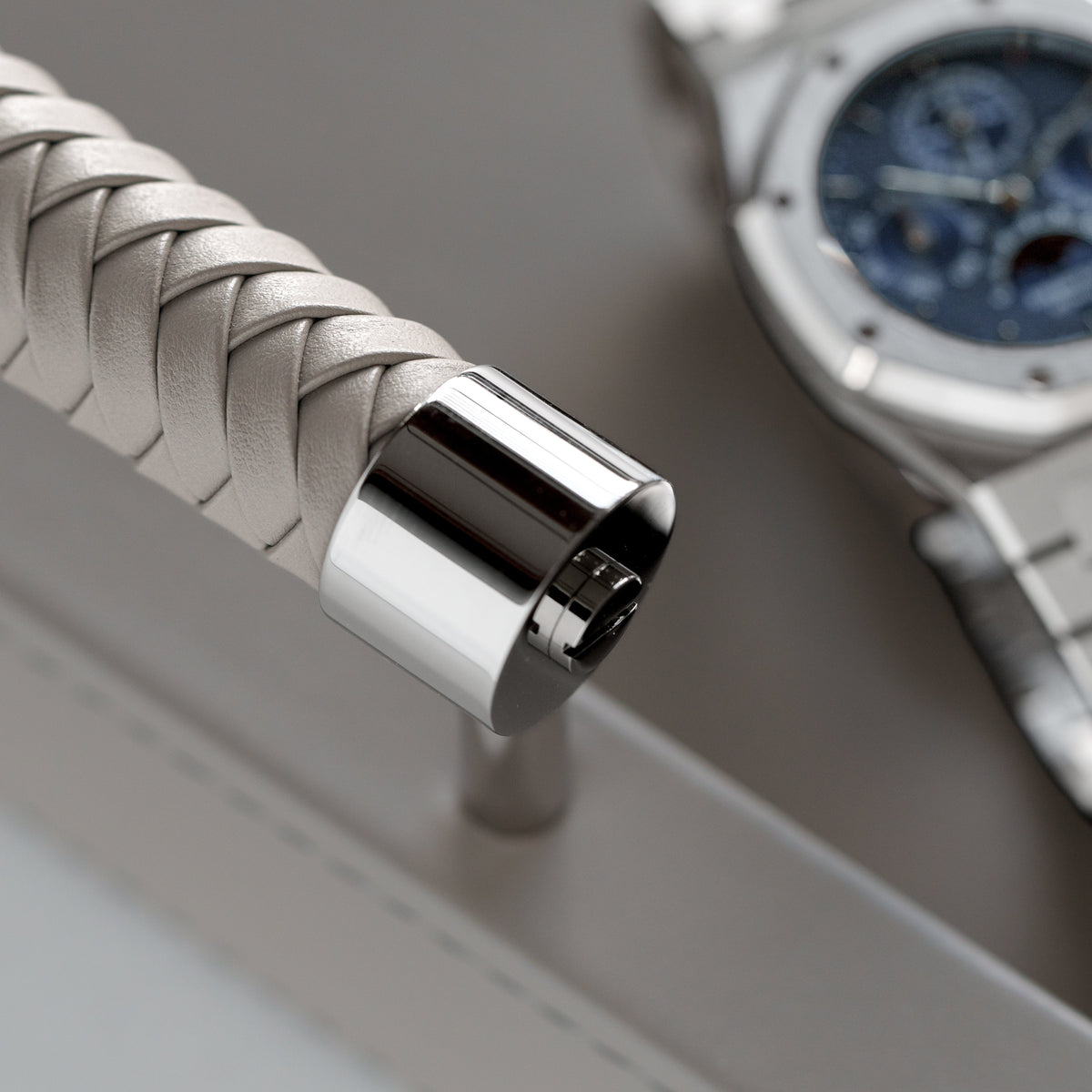

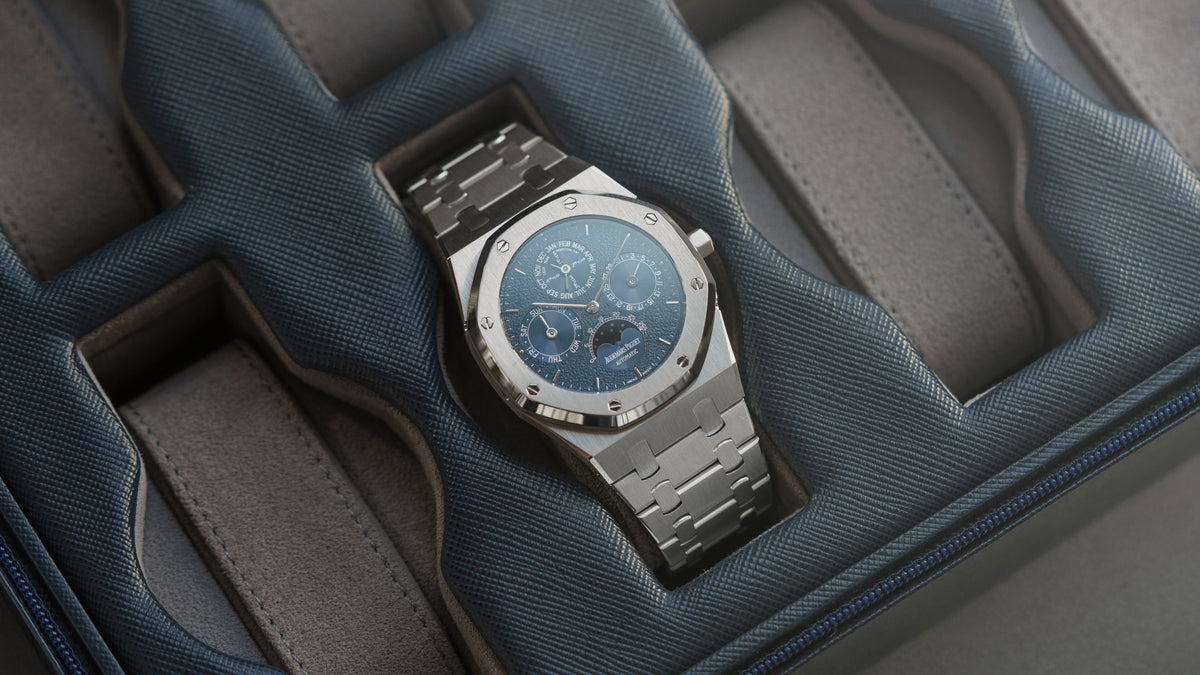


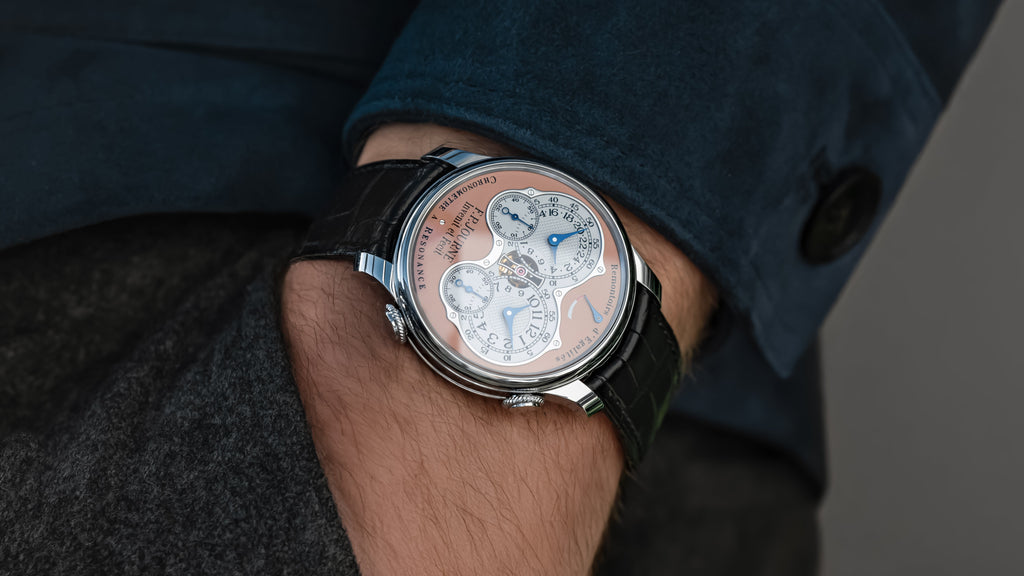
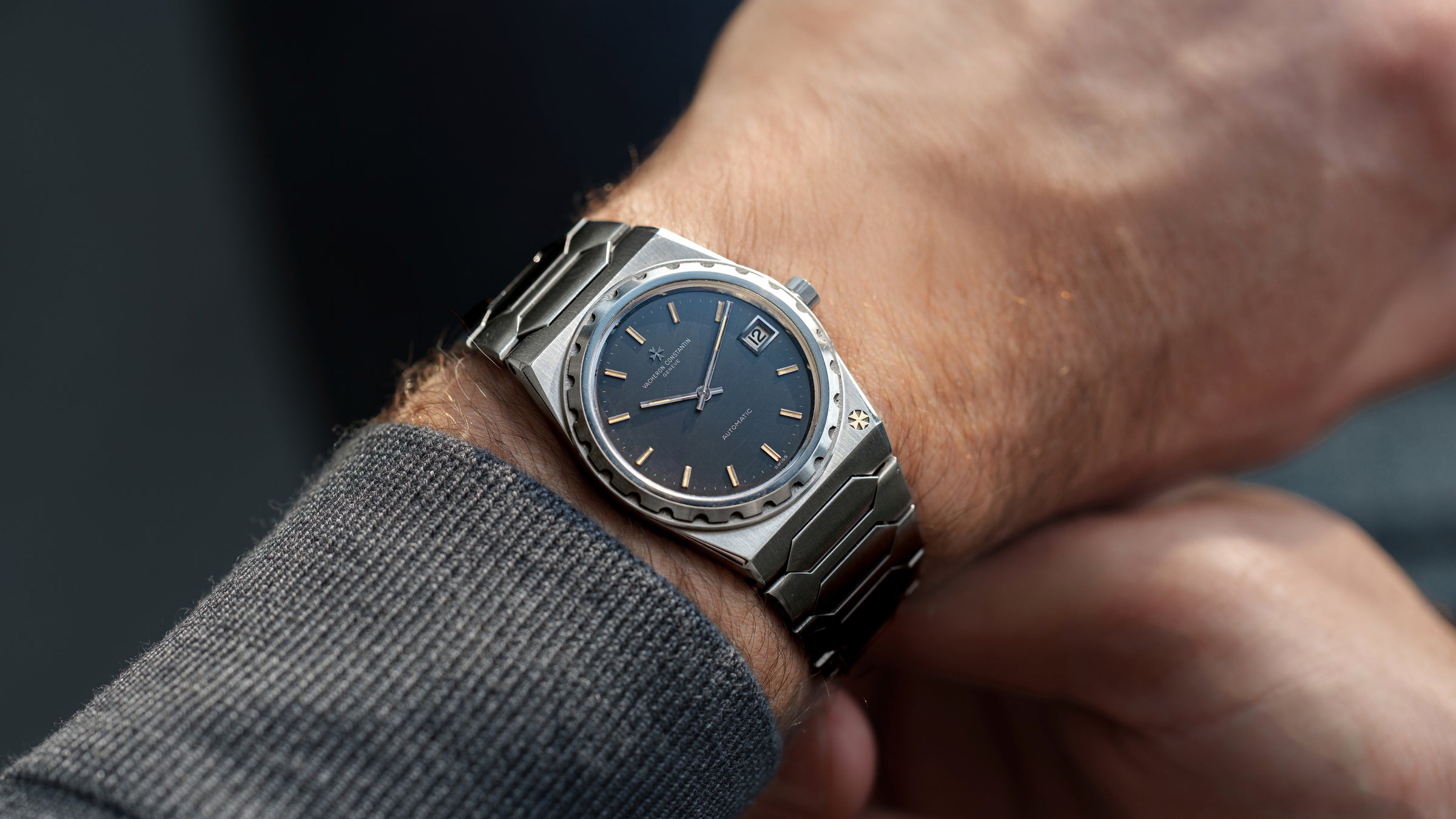
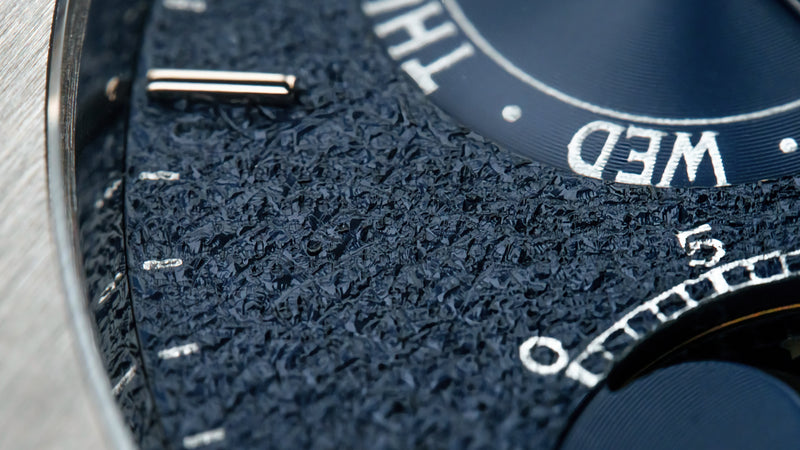

0 comments
Write a Comment